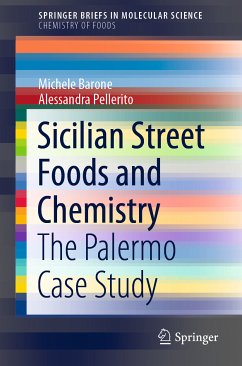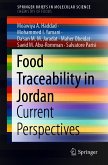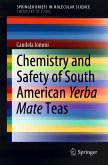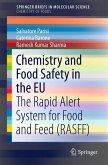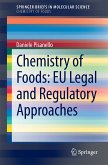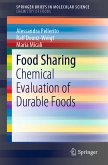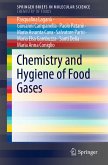Michele Barone, Alessandra Pellerito
Sicilian Street Foods and Chemistry (eBook, PDF)
The Palermo Case Study
40,95 €
40,95 €
inkl. MwSt.
Sofort per Download lieferbar

20 °P sammeln
40,95 €
Als Download kaufen

40,95 €
inkl. MwSt.
Sofort per Download lieferbar

20 °P sammeln
Jetzt verschenken
Alle Infos zum eBook verschenken
40,95 €
inkl. MwSt.
Sofort per Download lieferbar
Alle Infos zum eBook verschenken

20 °P sammeln
Michele Barone, Alessandra Pellerito
Sicilian Street Foods and Chemistry (eBook, PDF)
The Palermo Case Study
- Format: PDF
- Merkliste
- Auf die Merkliste
- Bewerten Bewerten
- Teilen
- Produkt teilen
- Produkterinnerung
- Produkterinnerung

Bitte loggen Sie sich zunächst in Ihr Kundenkonto ein oder registrieren Sie sich bei
bücher.de, um das eBook-Abo tolino select nutzen zu können.
Hier können Sie sich einloggen
Hier können Sie sich einloggen
Sie sind bereits eingeloggt. Klicken Sie auf 2. tolino select Abo, um fortzufahren.

Bitte loggen Sie sich zunächst in Ihr Kundenkonto ein oder registrieren Sie sich bei bücher.de, um das eBook-Abo tolino select nutzen zu können.
- Geräte: PC
- ohne Kopierschutz
- eBook Hilfe
- Größe: 2.54MB
Andere Kunden interessierten sich auch für
![Food Traceability in Jordan (eBook, PDF) Food Traceability in Jordan (eBook, PDF)]() Moawiya A. HaddadFood Traceability in Jordan (eBook, PDF)40,95 €
Moawiya A. HaddadFood Traceability in Jordan (eBook, PDF)40,95 €![Chemical Profiles of Selected Jordanian Foods (eBook, PDF) Chemical Profiles of Selected Jordanian Foods (eBook, PDF)]() Moawiya A. HaddadChemical Profiles of Selected Jordanian Foods (eBook, PDF)48,95 €
Moawiya A. HaddadChemical Profiles of Selected Jordanian Foods (eBook, PDF)48,95 €![Chemistry and Safety of South American Yerba Mate Teas (eBook, PDF) Chemistry and Safety of South American Yerba Mate Teas (eBook, PDF)]() Candela IommiChemistry and Safety of South American Yerba Mate Teas (eBook, PDF)40,95 €
Candela IommiChemistry and Safety of South American Yerba Mate Teas (eBook, PDF)40,95 €![Chemistry and Food Safety in the EU (eBook, PDF) Chemistry and Food Safety in the EU (eBook, PDF)]() Salvatore ParisiChemistry and Food Safety in the EU (eBook, PDF)40,95 €
Salvatore ParisiChemistry and Food Safety in the EU (eBook, PDF)40,95 €![Chemistry of Foods: EU Legal and Regulatory Approaches (eBook, PDF) Chemistry of Foods: EU Legal and Regulatory Approaches (eBook, PDF)]() Daniele PisanelloChemistry of Foods: EU Legal and Regulatory Approaches (eBook, PDF)40,95 €
Daniele PisanelloChemistry of Foods: EU Legal and Regulatory Approaches (eBook, PDF)40,95 €![Food Sharing (eBook, PDF) Food Sharing (eBook, PDF)]() Alessandra PelleritoFood Sharing (eBook, PDF)40,95 €
Alessandra PelleritoFood Sharing (eBook, PDF)40,95 €![Chemistry and Hygiene of Food Gases (eBook, PDF) Chemistry and Hygiene of Food Gases (eBook, PDF)]() Pasqualina LaganàChemistry and Hygiene of Food Gases (eBook, PDF)40,95 €
Pasqualina LaganàChemistry and Hygiene of Food Gases (eBook, PDF)40,95 €-
-
-
Dieser Download kann aus rechtlichen Gründen nur mit Rechnungsadresse in A, B, BG, CY, CZ, D, DK, EW, E, FIN, F, GR, HR, H, IRL, I, LT, L, LR, M, NL, PL, P, R, S, SLO, SK ausgeliefert werden.
Produktdetails
- Produktdetails
- Verlag: Springer Nature Switzerland
- Seitenzahl: 81
- Erscheinungstermin: 3. September 2020
- Englisch
- ISBN-13: 9783030557362
- Artikelnr.: 61353774
- Verlag: Springer Nature Switzerland
- Seitenzahl: 81
- Erscheinungstermin: 3. September 2020
- Englisch
- ISBN-13: 9783030557362
- Artikelnr.: 61353774
- Herstellerkennzeichnung Die Herstellerinformationen sind derzeit nicht verfügbar.
Michele Barone is an Experienced Consultant working in the field of food science and technology, and in restoration chemistry. His work in food science focuses mainly on food packaging and correlated failures, and selected food products with a dedicated tradition (for instance, the Mediterranean Diet). More recently, he has written about food traceability systems in the field of European cheese products. Michele currently works at the Association 'Componiamo il Futuro' (CO.I.F.) in Palermo, Italy (sector: professional training). He has recently published 'Dietary Patterns, Food Chemistry and Human Health' and 'Quality Systems in the Food Industry' in the series SpringerBriefs in Chemistry of Foods.
Alessandra Pellerito is a Biologist who graduated from the University of Bologna, Italy (2013), after completing her initial B.Sc. in Biology (Palermo, Italy). After a short stay in the United Kingdom, Dr Pellerito moved to Germany (Magdeburg), where she worked for two years as a Research Assistant at the Leibniz Institute for Neurobiology. At present, Dr. Pellerito works as a Food Quality Responsable in the private sector (Italy). She has published numerous articles on food chemistry, in particular on authenticity problems, traceability, and food labeling in the current European market.
Alessandra Pellerito is a Biologist who graduated from the University of Bologna, Italy (2013), after completing her initial B.Sc. in Biology (Palermo, Italy). After a short stay in the United Kingdom, Dr Pellerito moved to Germany (Magdeburg), where she worked for two years as a Research Assistant at the Leibniz Institute for Neurobiology. At present, Dr. Pellerito works as a Food Quality Responsable in the private sector (Italy). She has published numerous articles on food chemistry, in particular on authenticity problems, traceability, and food labeling in the current European market.
The Street Food Culture in Europe.- The Authentic Arancina.- The Authentic Sfincionello.- The Authentic Pane ca Meusa and Pane e Panelle.- The Authentic Pane e Panelle.
The Street Food Culture in Europe.- The Authentic Arancina.- The Authentic Sfincionello.- The Authentic Pane ca Meusa and Pane e Panelle.- The Authentic Pane e Panelle.
